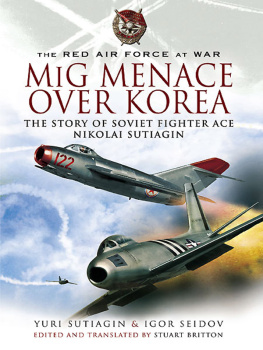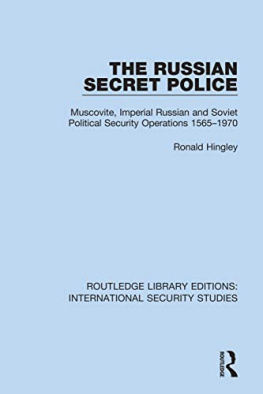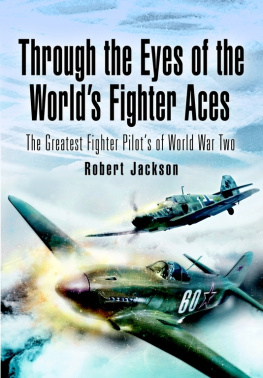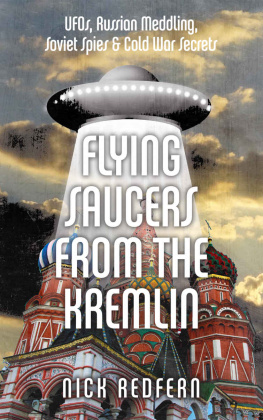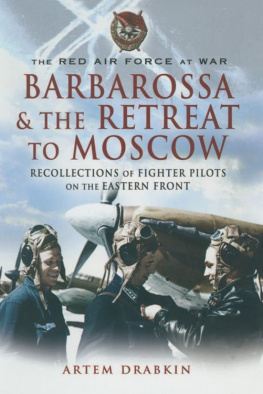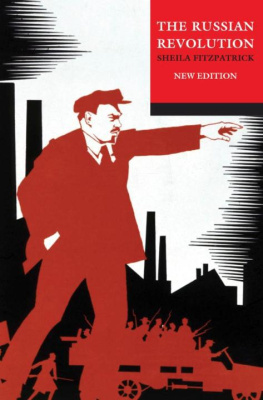
First published in Great Britain in 2009 by
PEN & SWORD AVIATION
an imprint of
Pen & Sword Books Ltd
47 Church Street
Barnsley
South Yorkshire
S70 2AS
Copyright Russian text Yuri Sutiagin and Igor Seidov 2009
Copyright English text Stuart Britton 2009
ISBN: 9781848840386
Digital Edition ISBN: 9781848847095
The right of Yuri Sutiagin and Igor Seidov to be identified as Authors of this Work have been asserted by them in accordance with the Copyright, Designs and Patents Act 1988.
A CIP catalogue record for this book is available from the British Library.
All rights reserved. No part of this book may be reproduced or transmitted in any form or by any means, electronic or mechanical including photocopying, recording or by any information storage and retrieval system, without permission from the Publisher in writing.
Printed and bound in the UK by
MPG Books
Pen-Sword Books Ltd incorporates the imprints of
Pen & Sword Aviation, Pen & Sword Maritime, Pen & Sword Military,
Wharncliffe Local History, Pen and Sword Select, Pen and Sword
Military Classics, Leo Cooper, Remember When,
Seaforth Publishing and Frontline Publishing.
For a complete list of Pen-Sword titles please contact
PEN & SWORD BOOKS LIMITED
47 Church Street, Barnsley, South Yorkshire, S70 2AS, England
Email:
Website: www.pen-and-sword.co.uk
Contents
List of Illustrations
Editors Preface
This English translation is an abridged version of Igor Seidovs and Yuri Sutiagins Groza Seibrov: Luchshii as Koreiskoi voiny [The Menace to Sabres: The Top Ace of the Korean War] (Moscow: Izdatelstvo Iauza Eksmo, 2006), which is dedicated to the story of the Soviet ace Nikolai Sutiagin. The original book contains material that, while interesting in its own right, was not pertinent to Nikolai Sutiagins life and combat record and was therefore excluded. Due to length considerations, in other places I have had to summarize the original Russian and selectively excerpt from some of the long orders and reports, which were presented verbatim in the original.
This book provides a revealing view into the operations of a Soviet fighter regiment during the war its men and their training, its equipment, and its successes and failures in combat. However, the authors place this analysis within the context of a larger discussion of the Soviet Air Force and its role in the Korean War.
There has been a long-running debate about the number of aerial combat victories scored by each side during the Korean War. Seidov and Sutiagin present the Russian side of this debate. However, the authors openly acknowledge that the records on both sides may be inaccurate, so they do not pretend to hold the absolute truth on the subject. They note whenever American records differ from the Soviet records and recognize that some of the Soviet kills may have in fact returned to base, albeit in a damaged condition. They also speak objectively about other matters in the book, such as training crashes, disciplinary problems in the 17th IAP [Fighter Aviation Regiment] and weaknesses of the MiG15.
The authors do recognize the declining effectiveness of the Soviet fighter regiments as this period came to a close, as improved variants of the F-86 arrived and the US 51st Fighter Wing switched over to the Sabre. As Seidov and Sutiagin reveal, fighter regiments arriving later from the Soviet Union had a more difficult time than the 17th IAP and its brother regiments experienced. The authors also criticize Stalins policy of rotating entire regiments and divisions through Manchuria during the war, which in their view was inferior to the American policy of rotating individual pilots and led to unjustifiable losses.
I wish to acknowledge the assistance of James Gebhardt, who is himself a translator of many books on the Soviet Armed Forces and its Air Force, and Boris Kavalerchik, a native speaker of Russian and a specialist on the Red Armys armor. Both stood by to help me with particularly knotty matters of translation and understanding. I also want to thank one of the authors, Igor Seidov, who was always quick to reply to my requests for elucidation or elaboration. As always, any mistakes in translation are my own. For the most part, I have used the Library of Congress system of transliteration. One exception is with the Soviet Yak fighters and bombers. I have opted to use the letter Y at the start of the name, rather than the Library of Congress I, to avoid any possible confusion with the Russian abbreviation for the Fighter Aviation Regiment, which is IAK.
I also want to extend my sincere gratitude to the staff at the Air Force Historical Research Agency at Maxwell Air Force Base in Alabama. I especially want to thank Lynn Gamma and Kevin Burge, who always stood by with information and maps to assist me with identifying some of the Korean locations mentioned in the original book. In many cases, direct transliteration of those names did not produce recognizable locations found in English-language sources. We did not succeed in identifying every location; some of the smaller villages in that secretive country could not be ascertained from their Russian names or located on any available maps. In those cases, I used the context of the passage in question to identify the area of the location and a larger, known town in that area, and then used that known location with the phrase in the area of .... Of course, that is also an expression that the authors used in many instances!
Finally, I want to thank Artem Drabkin, project coordinator of the Ia pomniu (I remember) website at http://www.iremember.ru, which is a vast repository of stories, memoirs, and photographs submitted by Red Army veterans. Mr. Drabkin passed along the manuscript for Seidov and Sutiagins book and arranged for the rights with the Russian publisher for an English translation of it.
Stuart Britton
Authors Preface
More than fifty years have passed since the end of the war between South and North Korea with the participation of international forces of the United Nations (UN) on one side, and the Chinese Peoples Volunteers (CPV) on the other. The participation in this war of Soviet servicemen, primarily pilots, was long a secret to the majority of citizens of the Soviet Union, up until the time of perestroika and glasnost. The results of the aerial conflict in the skies above Korea have still not been fully assessed, since the calculation of victories and losses in this air war by our researchers and official government agencies differs from that on the American side.
It is well known that the pilots of two Soviet air divisions General Lobovs 303rd (later commanded by Colonel Kumanichkin) Fighter Aviation Division (istrebitelnaia aviatsionnaia diviziia IAD) and Colonel Kozhedubs 324th IAD fought most successfully in Korea. However, it has turned out that of the five aviation regiments that comprised these two aviation divisions, the combat record of the 303rd IADs 17th Fighter Aviation Regiment (istrebitelnyi aviatsionnyi polk IAP) is known least of all, because the pilots of this aviation regiment left behind no written recollections, as did S. Kramarenko (of the 176th Guards Fighter Aviation Division [GIAD]), and E. Pepeliaev and B. Abakumov (of the 196th IAP). Moreover, an unenviable fate lay in wait for the 17th IAP at the end of the 1950s it was disbanded, leaving only the 18th GIAP and the 523rd IAP as part of the 303rd IAD.
Meanwhile, despite its provincial status (from 1945 on, the aviation regiment was based in the Soviet Far East), the 17th IAP fought no worse than the other famous parade regiments of the aforementioned divisions, which came to the war from the Moscow area and often participated in ceremonial flyovers and aerial shows. The 17th IAP ranked second according to the number of kills registered over the enemy, while at the same time suffering the least number of losses. In addition, other notable records of this air war belong to the 17th IAP: the top Soviet ace of the war, Nikolai Sutiagin (twenty-two victories), served in its ranks; the flight of Captain Dokashenko shot down more enemy planes than any other flight; and Captain Dokashenko himself once managed to shoot down three American F-86 Sabre fighters in one battle.

